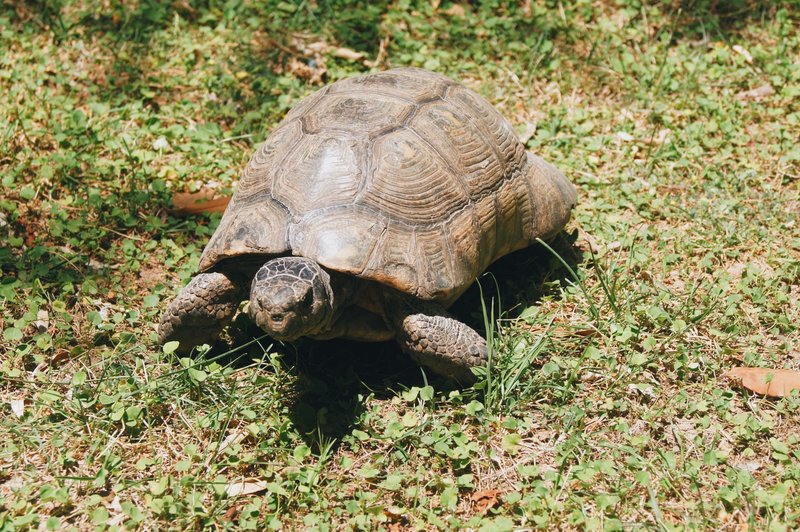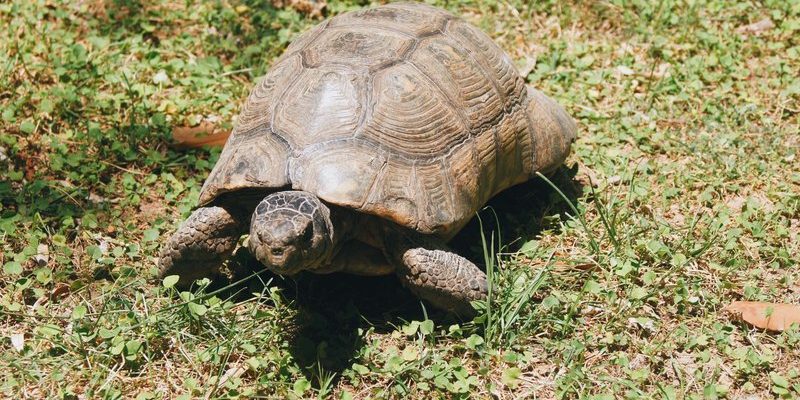
So, why does temperature and humidity matter so much? Well, tortoises are ectothermic, meaning they rely on their environment to regulate their body heat. Just like we might cozy up with a warm blanket on a chilly day, Marginated Tortoises need a carefully controlled habitat that mimics their natural environment. This article will walk you through everything you need to know about their specific requirements, helping you create a cozy and safe home for your shelled friend.
Understanding the Marginated Tortoise’s Natural Habitat
The Marginated Tortoise, or *Testudo marginata*, hails from the lush Mediterranean regions. This environment is marked by warm summers and mild winters, which is vital to consider when setting up your tortoise’s habitat. You might imagine a sunny hillside dotted with shrubs and low plants, where these tortoises roam freely, soaking up the sunshine while munching on tasty greens.
In their natural habitat, temperature can swing considerably throughout the day. During the day, temperatures can rise to 80-90°F (27-32°C). At night, they may drop to around 60-70°F (15-21°C). These fluctuations help the tortoises regulate their body temperatures efficiently, reinforcing the point that providing a range of temperatures in a terrarium or outdoor enclosure is essential. With these insights, you can better recreate their natural environment.
Creating the Right Temperature Gradient
To create a suitable environment for your Marginated Tortoise, you need to establish a temperature gradient in its habitat. This means having a warmer basking area and a cooler resting area. Here’s how to do that:
1. Basking Spot: Use a basking lamp to create a warm area that reaches about 90-95°F (32-35°C). This spot is essential as it allows the tortoise to soak up heat, which promotes digestion and overall well-being.
2. Cool Zone: On the other side of the enclosure, set up a cool area where temperatures hang around 70-75°F (21-24°C). This gives your tortoise a choice to escape the heat when necessary, helping it regulate body temperature effectively.
3. Thermometer Placement: Placing thermometers in both the basking and cooler areas allows you to keep an eye on the temperatures. If you notice fluctuations, you can adjust your heating lamps or the distance of the lamps to maintain that necessary gradient.
Setting up this gradient isn’t just about creating a comfortable space; it’s about ensuring your tortoise has everything it needs to thrive.
Humidity Requirements for Marginated Tortoises
Humidity levels are another critical aspect of your Marginated Tortoise’s habitat. In the wild, these tortoises experience varying humidity levels, which can affect their health. The recommended humidity level for these tortoises is around 40-60%. You might be wondering why this matters; well, humidity plays a role in aiding hydration and supporting their respiratory health.
Here’s an interesting fact: if the humidity is too low, it can lead to health issues like respiratory infections or dehydration. To keep the humidity just right, consider these tips:
– Water Dish: Provide a shallow dish of water for your tortoise to drink and soak in. This can help keep humidity levels stable.
– Misting: Occasionally mist the enclosure with a spray bottle. This helps raise humidity levels temporarily and mimics the dew they might encounter in their natural habitat.
– Substrate Choice: Use a substrate that retains some moisture, like coconut coir or a mixture of soil and sand, which can help maintain humidity in the enclosure.
Monitoring humidity levels is crucial, especially if you live in a dry climate. Use a hygrometer to ensure you’re hitting that sweet spot consistently.
Signs of Improper Temperature or Humidity
Even with the best intentions, sometimes things don’t go as planned. It’s vital to watch for signs that your Marginated Tortoise might be uncomfortable due to improper temperature or humidity. Here’s what to look for:
– Lethargy: If your tortoise is unusually sluggish, it could be because it’s too cold or too hot. Tortoises often curl up in their shells or hide away if they’re not feeling right.
– Dehydration: Dry, flaky skin or a lack of appetite can indicate low humidity. If you notice your tortoise isn’t drinking or soaking as usual, it might be time to adjust the humidity levels.
– Breathing Issues: Excessive wheezing or bubbling can signal respiratory problems, often linked to poor humidity levels.
If you spot any of these signs, it’s time to reassess your setup. Adjusting the temperature or humidity can often help get your tortoise back on track.
Maintaining Stability in Temperature and Humidity
Maintaining a stable environment is crucial for the well-being of your Marginated Tortoise. Fluctuations in temperature or humidity can create stress and lead to health problems. Here are some tips to keep everything balanced:
1. Use Quality Equipment: Invest in reliable heat lamps, thermometers, and hygrometers. Cheaper equipment might not provide accurate readings, which can lead to mishaps.
2. Regular Checks: Make it a habit to check the temperature and humidity daily. A little diligence goes a long way in preventing problems.
3. Enclosure Location: Place the enclosure in a location that does not receive direct sunlight or extreme drafts. Too much sunlight can cause overheating, while drafts can drop temperatures quickly.
Creating a stable environment might take some trial and error, but it’s essential for the comfort of your tortoise.
Seasonal Considerations
As the seasons change, so do the temperature and humidity needs of your Marginated Tortoise. In winter, you might need to increase the heating in their enclosure to maintain that essential warmth. Conversely, during the summer months, ensure they have enough cooling options, especially if temperatures spike.
– Winter: Increase basking temperature slightly to around 95°F (35°C), and keep the cool side warm enough to prevent the tortoise from becoming too cold.
– Summer: Monitor your tortoise closely; offer shade and ensure humidity stays adequate.
Adjusting your tortoise’s habitat seasonally keeps them healthy and active all year round.
Final Thoughts on Temperature and Humidity Needs
Caring for a Marginated Tortoise is a wonderful and rewarding experience. By understanding and providing for their temperature and humidity needs, you create a nurturing environment that promotes a long, happy life. It might seem a bit overwhelming at first, but once you get the hang of it, you’ll be surprised at how quickly you’ll fall into a routine that benefits both you and your tortoise.
So grab those thermometers, hydrometers, and basking lamps, and remember: your tortoise’s happiness and health hinge on your dedication to recreating that perfect Mediterranean climate. With a little effort, you’ll be well on your way to being an expert tortoise parent!

